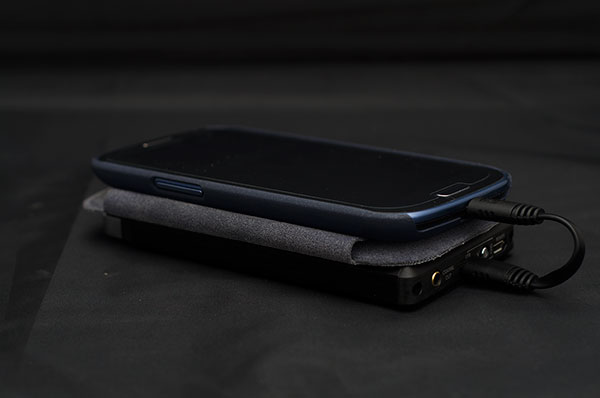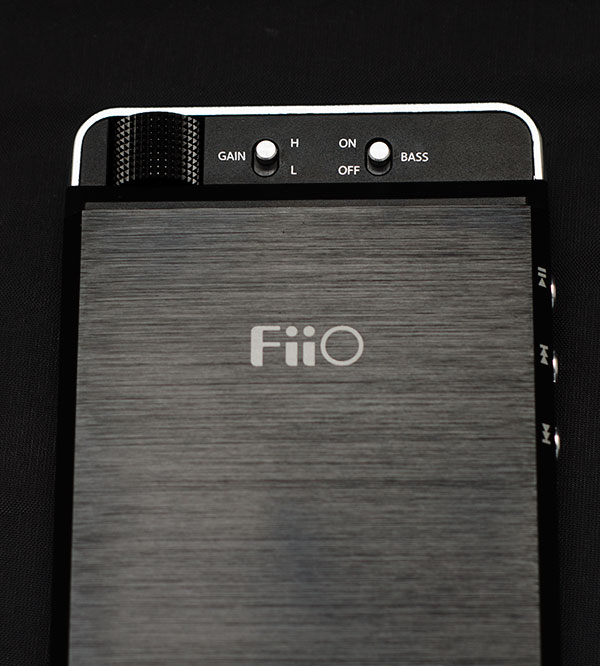The FiiO E18 should not just be seen in light of the fact it can decode USB OTG natively from some Android units – that is selling this ‘swiss army knife’ device a bit short in all honesty. The E18 also doubles up as a regular 5v USB DAC/AMP for your laptop or PC making it a potential budget system device or all in one sound card upgrade. Further you can use it as a traditional portable amp with an analog IC from just about any DAP and last but not least it can act as a portable powerbank for charging your device of choice with the right usb connection.
That is 4 devices in one neat little low profile package as such it cannot be simply classified as an audio device alone. This is a modern day device that fits 100% into what the modern consumer, mobile phone user and budget audiophile might want in a first time upgrade. Quite apart from any comment on tonality and power, the myriad of applications the E18 can be applied to, particularly if you happen to own an S3/4 Xperia Z and HTC One (which I do finally!), make this one heck of an outstanding convergence device.
I actually went out and bought a Samsung S3 on the back of receiving the E18. I had been resisting for ages but in the end a critical mass of Android audio devices landed on my desk this month and I really had no option or the review would be a bit lacking. The good news is that the form factor of the E18 is perfect for stacking with the S3 in terms of length and width and whilst being a bit deeper than the S3 its otherwise low profile (about same as E12) keeps everything in perspective. Those with similar sized HTC and Sony devices should experience the same snug fit and FiiO has also announced the LG G2 works natively so thats another option to consider as well as the abnormally large Samsung Note 2 and 3.
Internally the FiiO E18 is built around the TI PCM1795 DAC chip capable of 32bit 192kHz decoding and the Tenor TE7022 USB receiver which sadly does not allow 32bit 192kHz but instead a top end of 24/96. So if you are using the E18 as your main PC decoder you will top out 24/96 officially via USB. As an OTG audio DAC on Android things are not as even depending on which platform you are using so the baseline might be as low as 16/44.1. That is one of the tricky things developing for Android, you do not have one single platform but multiple so results can vary unlike the more consistent development for idevice platforms since there is basically just one platform. In terms of amping the E18 runs a Texas Instruments OPA1612 and a dual LMH6643 setup.
Externally the E18 is packaged in its usual well cut casing which, despite some others thinking otherwise, I happen to quite like and think it entirely suitable for purpose. On the back you have the outputs and inputs – coaxial, USB decoding and USB for charging and power. On the sides you have what amounts to a basic control system for audio (forward, back, play and pause) and on the front you have the now standard bass boost option (off and on), gain option, protected volume pot (doubles as power on off also) and your headphone and input/line-out jack. That is a pretty impressive set of controls and tells you how far FiiO have come to understanding convergence and the learning they have done right back to the E7/10 and 11. It does looks pretty much like the E12 actually with the added top cutaway for the controls. The recessed cutaway also allows it to be stacked neatly on the phone and have full control of everything without the phone blocking the control and volume. Nice thought guys.
You also get your usual array of connectors – Micro USB OTG Cable, regular USB to micro, 3.5mm IC and a coaxial adapter. For some reason though I had to twist my OTG cable for the S3 for both ends to connect to the E18 and S3 – how odd; am I the only one? The cable length is about right though for me personally though I can see even shorter ones being the norm for others who like a really small footprint.
The E18 also comes packaged with a 3500mah battery so whilst not being the power house battery inside the Theorem 720 it is going to juice your phone nicely when switched into charger mode. Note do not put it in power bank mode when connected into the PC. The micro LED light system on the bottom right hand side of the E18 will give you a pretty fair indication of charge status and battery life also (3 LED for high, medium and low battery status).
Click on next page for sound impressions




